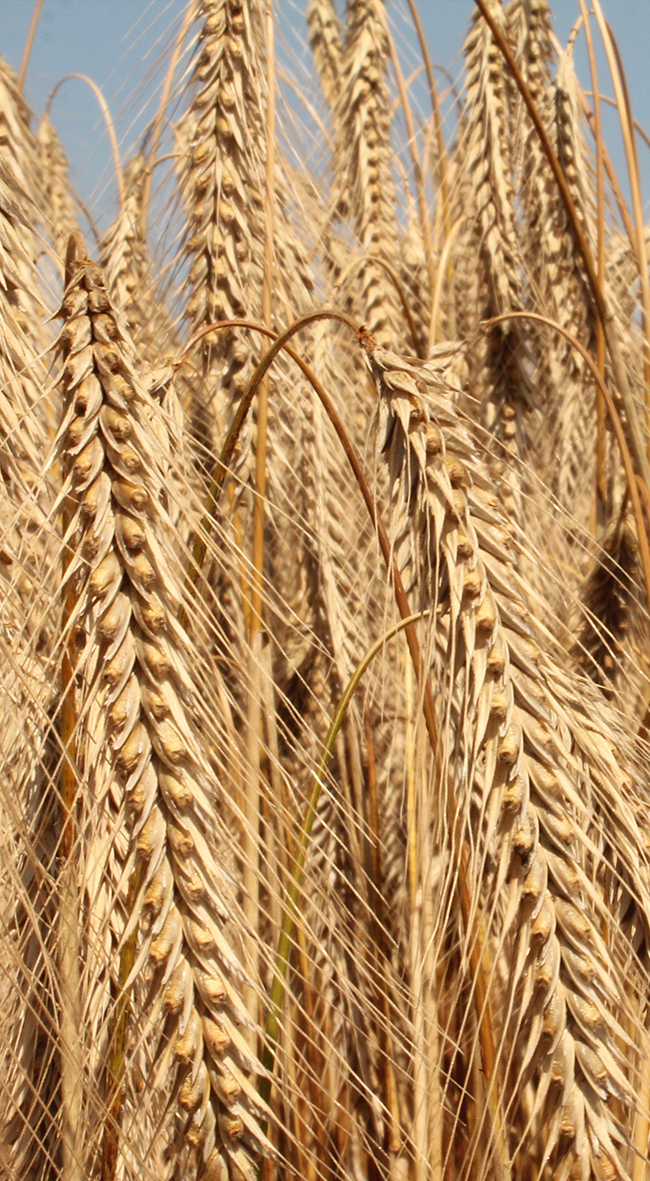 Photosynthesis is the primary determinant of crop yield. Enhancing photosynthesis, electron transport and photorespiration has, thus, been accepted as a key target for increasing crop productivity. Hybrids are characterized by a particularley effective light interception machinery beginning with seedling vigour and including homeostasis of photosynthesis over a broad range of environmental conditions as the basis for a strong source. Transcriptional profiling in rice revealed, that hybrid breeding enables to increase activity of enzymes involved in carbon fixation pathways and net photosynthetic rate. The well established heterotic pattern of rye, therefore, offers a proven option to systematically increase and secure basic grain productivity in terms of converting solar irradiation into biomass on finite arable land without increasing water and fertilizer use. The main sites of photosynthesis are leaves, and plants with leaves of optimal shape and size harvest light more efficient, leading to a faster growth rate and increased yield. Morphological characters of the plant like the size and shape of leaves as well as their spatial arrangement determine a plants architecture. The importance of the plant architecture on crop yield potential became evident during the 'green revolution', when the genetic improvement of plant height in wheat and rice resulted in an unprecedented increase in agricultural production.
Photosynthesis is the primary determinant of crop yield. Enhancing photosynthesis, electron transport and photorespiration has, thus, been accepted as a key target for increasing crop productivity. Hybrids are characterized by a particularley effective light interception machinery beginning with seedling vigour and including homeostasis of photosynthesis over a broad range of environmental conditions as the basis for a strong source. Transcriptional profiling in rice revealed, that hybrid breeding enables to increase activity of enzymes involved in carbon fixation pathways and net photosynthetic rate. The well established heterotic pattern of rye, therefore, offers a proven option to systematically increase and secure basic grain productivity in terms of converting solar irradiation into biomass on finite arable land without increasing water and fertilizer use. The main sites of photosynthesis are leaves, and plants with leaves of optimal shape and size harvest light more efficient, leading to a faster growth rate and increased yield. Morphological characters of the plant like the size and shape of leaves as well as their spatial arrangement determine a plants architecture. The importance of the plant architecture on crop yield potential became evident during the 'green revolution', when the genetic improvement of plant height in wheat and rice resulted in an unprecedented increase in agricultural production.
In semi-dwarf Ddw1 genotypes , similar to wheat, the ear has proven to be supplied with assimilates essentially via the flag leaf (F) and F-1, while in their tall equivalents, like in current standard rye varieties, the stem is the main photosynthesis organ. A genetically optimized allocation of dry matter to the grain by means of Ddw1, together with the systematic exploitation of heterosis, offers an approach to increase rye productivity that is substantially different from current methods in the genetic improvement of rye and wheat.

